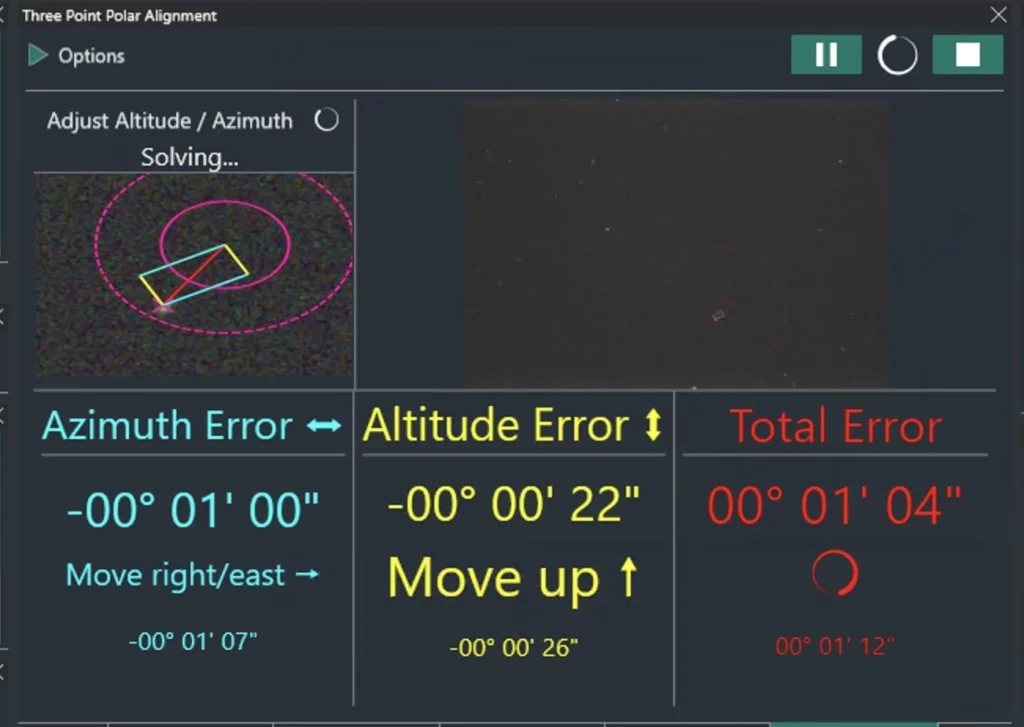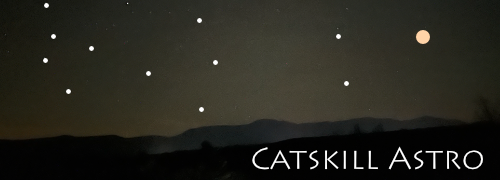Equatorial Mounts and Polar Alignment

I started EAA using an Alt/Az mount, and switched to an AM5 GEM mount after about 6 months. So I’ve used both.
Bottom line, you can do high quality EAA with either type of mount. So, if you currently own an Alt/Az mount, don’t let that stop you from trying EAA. But if you have a choice, I think an equatorial mount is better. Why?
For EAA, the biggest advantage is more accurate framing. If you stay on a target for more than a few minutes, with an alt/az mount you’ll lose some of the original fov to field rotation. If you’re like me, and enjoy big objects in tight framing, that can be a problem.
Another advantage of a EQ mount, is it is simpler to manage cables.
An EQ mount will also enable longer exposures. But in EAA you’re rarely taking exposures longer than 30 seconds anyway, and generally an Alt/Az mount will allow exposures of at least that length. With modern, CMOS astro-cameras, read noise is so low that there’s not a huge difference between one long exposure and several short ones. So not a big deal.
The “downside” of an EQ mount is you do need to polar align, though in fairness it’s only slightly more complicated than star-aligning an Alt/Az mount. There are lots of tools available to help you polar align, including both SharpCap and NINA which offer highly regarded routines.
An advantage of NINA’s is that you don’t need to see Polaris to use it… it works pointing anywhere in the sky. In the Catskills, where I’m often observing in partly cloudy skies, that can be a major advantage. Otherwise, both work similarly using platesolving to measure error. You then adjust your mount, wait for platesolving to get a new measurement, and react accordingly. Generally speaking, Total Error of under two arcminutes is fine for EAA.
It’s important that your telescope be in good focus before attempting polar alignment. Not necessarily perfect, but quite good. Otherwise, the error platesolving can get flaky, especially if a high cloud or two pass through. You can end up waiting a long time for an updated error-reading. In my workflow I always focus before polar alignment.
Keep in mind that your telescope is almost never perfectly level. So if you adjust azimuth, it will affect altitude error. I generally try to get azimuth under 2 arcminutes, then adjust altitude, and then do a final “touch up” on azimuth.
